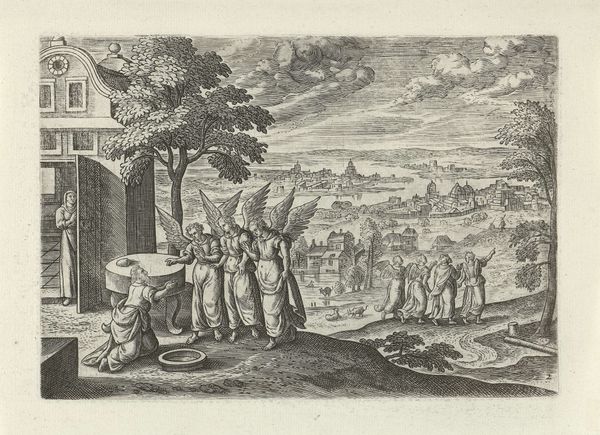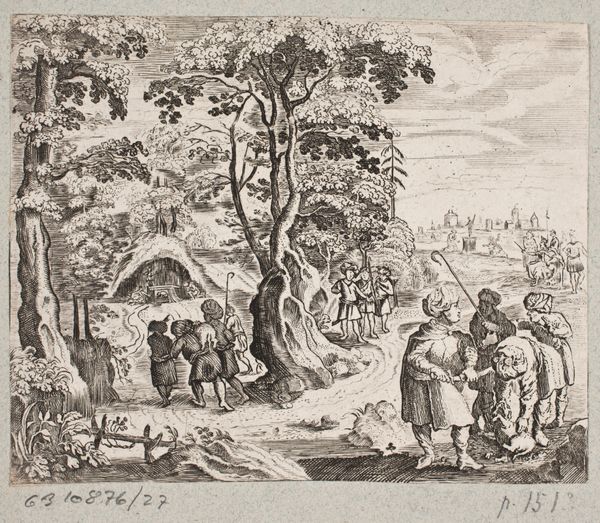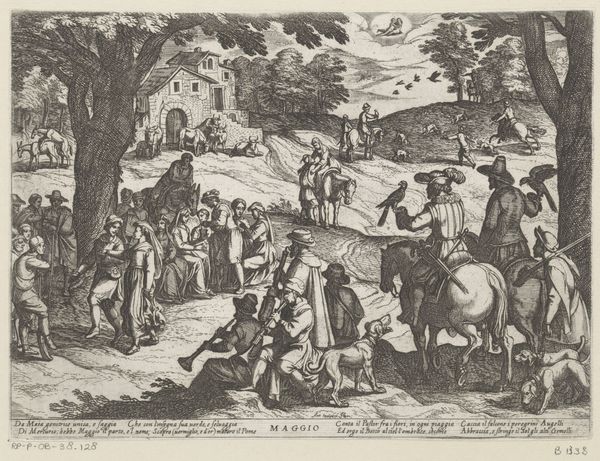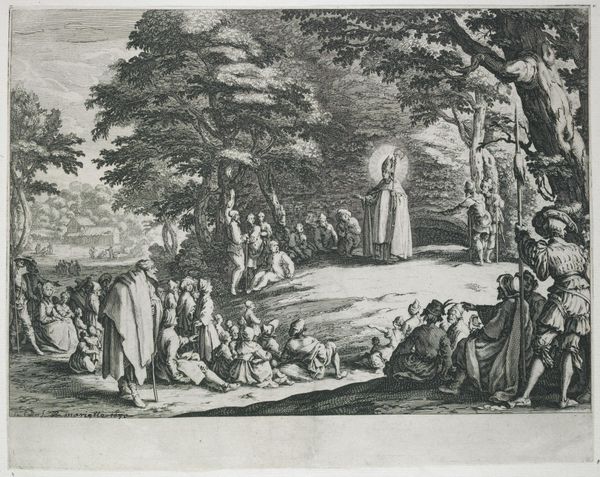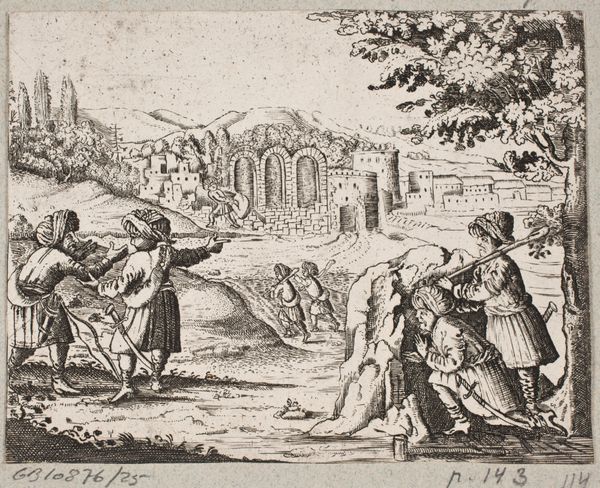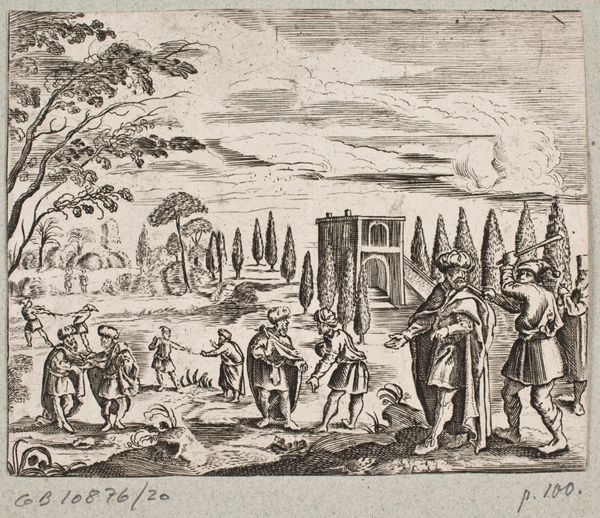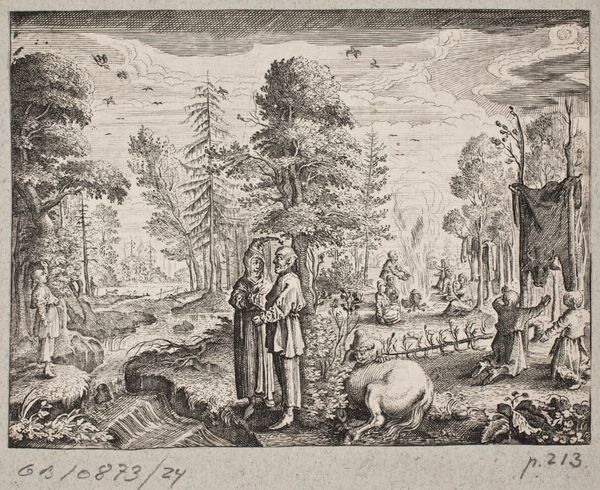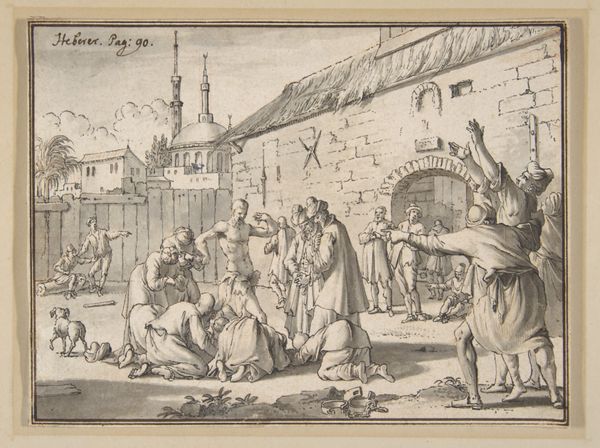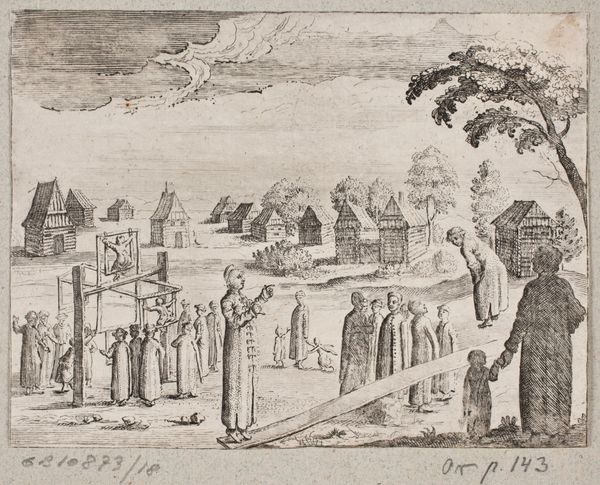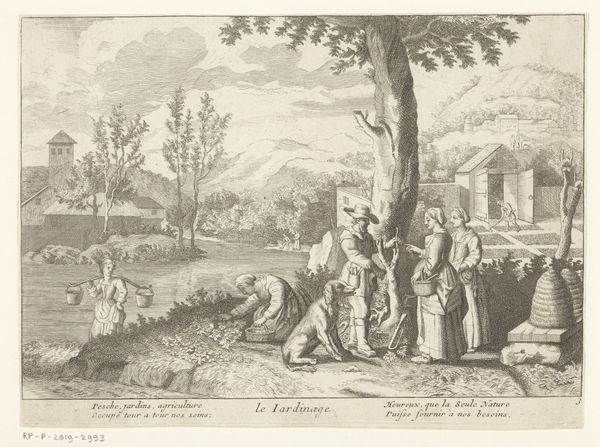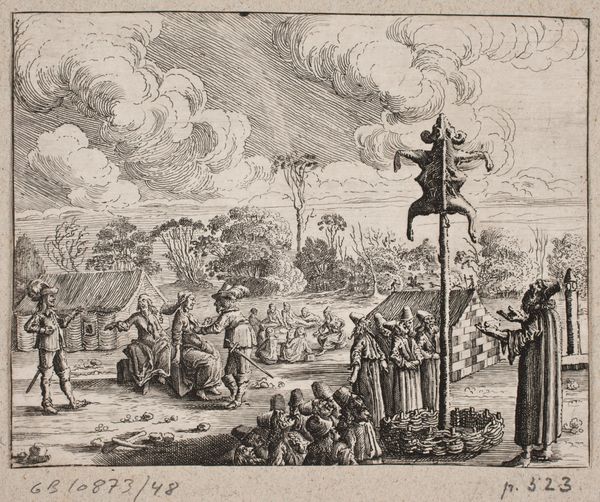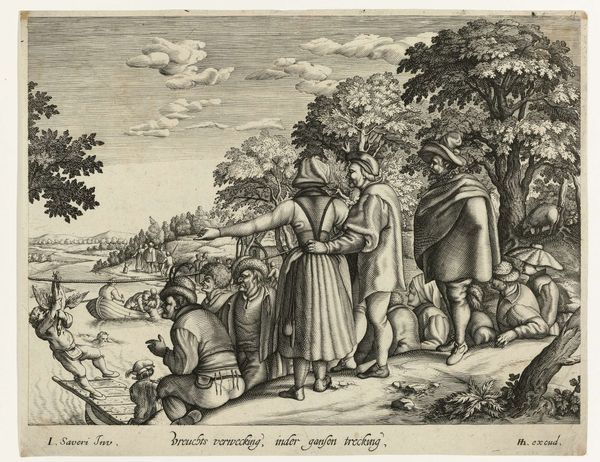
print, engraving
#
medieval
# print
#
landscape
#
figuration
#
history-painting
#
engraving
Dimensions: 95 mm (height) x 140 mm (width) (bladmaal)
Editor: So here we have an engraving called "Folk samlet omkring en russisk trækirke", or "People Gathered Around a Russian Wooden Church," dating back to 1647. The anonymous artist has created a really detailed scene. I'm curious, what jumps out at you about this print? Curator: What interests me immediately is the *making* of this image. An engraving is all about process. Consider the engraver meticulously carving into that metal plate, line by line, to reproduce this scene. It's labor-intensive! Each of those lines represents time, effort, the very physicality of artistic production. And it was likely produced to disseminate a certain narrative. I wonder, what story was the print intended to tell, and for whom? Editor: That's interesting! I was so caught up in the scene itself – the people, the church, the landscape – that I hadn’t thought about the sheer amount of work to create the engraving. Were prints like this common forms of mass communication then? Curator: Exactly! Think about it: printing allowed for broader distribution of images and ideas. And what materials did they have access to? This becomes an access point to exploring the social dynamics of the time. Was it designed for local circulation or international exchange? Editor: So by focusing on the printmaking process and its accessibility, we learn about the cultural consumption of images in 17th-century Russia, as much as the scene it is showing! Curator: Precisely! We can understand more about the lives and conditions that resulted in its creation. Instead of isolating "art," we see a social product! Editor: Wow, I hadn't thought about it like that before! Focusing on the material production really opens up a new avenue for understanding the work. Curator: It certainly shifts the focus away from only *what* is represented to *how* it was made, for *whom*, and *why*! I am struck by the possibility of accessing hidden, suppressed stories by understanding production and materials.
Comments
No comments
Be the first to comment and join the conversation on the ultimate creative platform.

